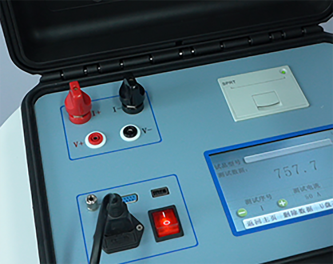 English
English


Understanding High Voltage Wire Testing for Improved Electrical Safety Standards
Understanding Hipot Wire Testing A Comprehensive Guide
Hipot testing, short for high potential testing, is a crucial process in electrical safety designed to ensure that insulation within electrical devices can withstand high voltage stresses. The main objective of hipot wire testing is to detect any potential breakdown in an electrical insulation system before it is subjected to operational conditions. This article delves into the importance, methodology, and applications of hipot wire testing.
The Importance of Hipot Testing
Electrical insulation is vital for the safe operation of electrical devices. Over time, insulations can degrade due to factors such as aging, mechanical stress, excessive temperature, or exposure to harsh environments. If these insulating materials fail, it can lead to dangerous situations, including electrical shock, equipment failure, or even fire hazards. Therefore, hipot testing serves as a preventive measure in identifying weaknesses in insulation before a device is put into service.
The Methodology of Hipot Testing
Hipot testing involves applying a high voltage to the insulation of electrical components to ensure they can sustain higher-than-normal operating voltages without breaking down. Here’s a simplified overview of the testing process
1. Preparation Gather all necessary equipment, including a hipot tester, safety gear, and the device or wire to be tested. Ensure that the work area is safe and free from unnecessary personnel.
2. Setup Connect the hipot tester to the device, ensuring proper leads are attached to the live conductor and the ground. The exact setup can vary based on the type of device being tested, whether it’s a wire, a circuit, or an entire system.
hipot wire testing

3. Testing Set the appropriate test voltage on the hipot tester. The voltage level typically ranges from 500V to 5000V, depending on the insulation rating of the device being tested. Gradually increase the voltage while monitoring the device for any signs of insulation breakdown or failure.
4. Monitoring While the test is being conducted, the hipot tester continuously monitors current flow. An increase in current indicates a failure in insulation, which can either be a result of a dielectric breakdown or a leakage current.
5. Conclusion After the test duration, which usually lasts from 1 to 5 minutes, the device is evaluated. If the insulation holds up without excessive current flow, it passes the test. If it fails, further investigation is needed to determine the cause before corrective measures are implemented.
Applications of Hipot Testing
Hipot testing is essential across various industries. In manufacturing, it is routinely performed on electrical appliances, power tools, and cable assemblies to ensure that they meet safety regulations before they reach consumers. In hospitals, testing is critical for medical equipment where failures can directly impact patient safety. Automotive industries also utilize hipot testing to guarantee that vehicle electrical systems can withstand high potential without failing, ensuring safety for both the driver and passengers.
Conclusion
In summary, hipot wire testing is an indispensable part of electrical safety protocols in multiple sectors. By regularly performing these tests, manufacturers and engineers can identify potential hazards and ensure that their products are safe and reliable for end-users. As technology continues to evolve, so will the techniques and equipment used in hipot testing, making it a critical area of focus for electrical safety professionals aiming to uphold stringent safety standards. Whether you're dealing with household appliances, industrial machinery, or medical devices, understanding and implementing hipot testing can significantly mitigate risks associated with electrical insulation failures.
-
Differences between open cup flash point tester and closed cup flash point testerNewsOct.31,2024
-
The Reliable Load Tap ChangerNewsOct.23,2024
-
The Essential Guide to Hipot TestersNewsOct.23,2024
-
The Digital Insulation TesterNewsOct.23,2024
-
The Best Earth Loop Impedance Tester for SaleNewsOct.23,2024
-
Tan Delta Tester--The Essential Tool for Electrical Insulation TestingNewsOct.23,2024





